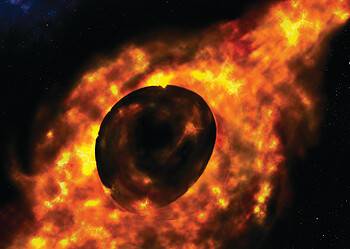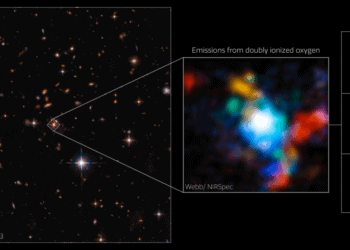
This is only the second time ever that astronomers have managed to identify a triple quasar system – a highly elusive and very difficult to observe phenomenon. The international team of researchers identified and described the triple quasar system named QQQ J1519+0627 in a paper published in the Oxford University Press journal Monthly Notices of the Royal Astronomical Society.
Quasars are some of the most energetic and brightest objects in the Universe, residing at the center of galaxies around a black hole. Sometimes quasars can form a system, held together by gravity, and are believed to be product of galaxies colliding. Since they’re so energetic, however, observing binary, even triple quasar systems is a very difficult astronomical feat since instruments have a hard time distinguishing individual bodies from one another. Moreover, such phenomena are presumed to be extremely rare.
It’s no wonder then that this triple quasar system, located at a whooping 9 billion-light years away (meaning the light was emitted when the Universe was only a third of its current age), is only the second one found. In order to confirm that indeed three distinct quasar bodies form the system, the team of astronomers led by Emanuele Farina of the University of Insubria in Como, Italy, combined telescope observations advanced modelling.
Furthermore, it was found that two of the three members are closer to each other than the third, hinting that the system was likely formed by the interaction between the two adjacent quasars, but was probably not triggered by interaction with the more-distant third quasar. What’s rather peculiar, however, is the lack of ultra-luminous infrared emissions that typically spur from a certain type of galaxies quasars like to call home. This has prompted the researchers to believe this triplet quasar system is part of some larger structure that is still undergoing formation.
“Honing our observational and modelling skills and finding this rare phenomenon will help us understand how cosmic structures assemble in our universe and the basic processes by which massive galaxies form,” Fumagalli said.
“Further study will help us figure out exactly how these quasars came to be and how rare their formation is,” Farina added.






